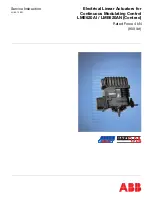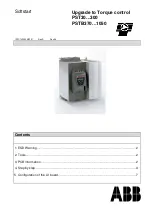
The Agility Controller has multiple LEDs indicating its operational status.
Both the red and the green LEDs, labeled Status, indicate the general condition of the controller. The behavior of these LEDs differs during initial
power-on and normal operation.
During power-on, both LEDs should immediately illuminate. Within a few seconds the red LED should turn off. This indicates the processor is
operational. If an abnormal condition exists during the self-test phase, the red LED will issue a unique blink code to indicate the source of the error.
Refer to the next section for details. No LEDs will illuminate if there are power supply issues (ex. a blown fuse).
Several seconds later during a normal power-on cycle, the green LED should begin flashing in a consistent one second on then one second off
blinking pattern. This indicates the “heartbeat” of normal Agility Controller operation.
Each of the two serial communication ports has a pair of LEDs indicating transmission and reception of serial data. The TX LED indicates the Agility
Controller has sent a message. The RX LED indicates the Agility Controller has received a message.
The Ethernet jack has a green LED which indicates a basic connection to the network. It does not indicate that the network settings are correctly set.
Agility Power On Self Test (POST) Codes
During power-up, the Agility microcontroller performs a Power On Self Test (POST). Any abnormal conditions are reported by the Red Status LED: A long blink (a
one second On period followed by a one second Off) followed by a number of short blinks. The number of short blinks indicates the POST error code. For
example, one long blink followed by four (4) short blinks would indicate POST code four (4) which indicates "EEPROM Memory Failure". Multiple errors are
flashed sequentially, one after another with a long blink between each code.
Agility POST Code List (may vary by application; refer to online error code list)
1 Unrecoverable Error
2 Program Recovery Mode
3 NBus Failure
4 EEPROM Memory Failure
5 Digital I/O Driver Fault
6 Analog Output Module Error
7 COM-1 Failure
8 COM-2 Failure
9 Device Initialization Chain Failure
10 Task Initialization Chain Failure
11 Invalid Library Function
12 Factory Defaults Error
13 WebServer Fault
Power and Circuit Protection











































